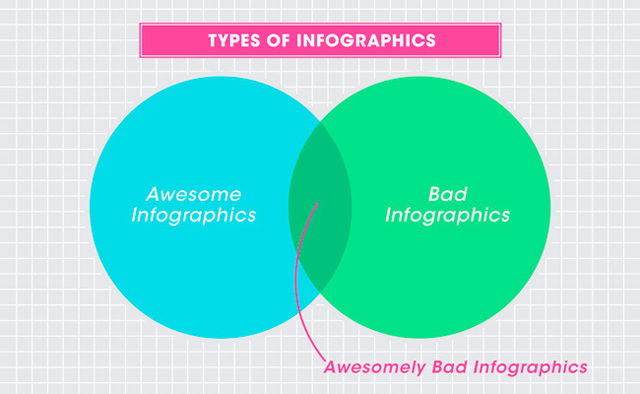Coca-Cola Arctic Home White Cans: Good Move?
Recently, Coca-Cola has received some backlash from the release of the Arctic Home white cans. It is the first time in the company’s 125-year history that the cans are not mostly red. So, was the decision to produce these limited-edition white cans a good one or was it a poor strategy to raise awareness? Read More
Method Ocean Plastic Initiative

Method is known as an industry innovator with its eco-conscious line of household and personal care products. The company’s latest innovation in sustainable packaging is a bottle made out of plastic that washed up on beaches from the North Pacific Gyre, often referred to as the Great Pacific Garbage Patch or the Pacific Trash Vortex. Read More
Infographic Design Rules

HOW Interactive Design – Bad Inforgraphics
Lately, I’ve come across quite a few articles about infographic design — determining whether or not it is overused and discussing proper usage. Here are two articles and my favorite takeaways:
The Do’s And Don’ts Of Infographic Design from Smashing Magazine.
- Show, Don’t Tell — A rule of cinema is to show, don’t tell. The same holds true for infographic design. The foundation of any good infographic is data viz.
- If the Client Wanted an Excel Chart, They Wouldn’t Need You — It might sound harsh, but it’s true. If infographics were as simple as laying out a bunch of standard charts and graphs on a page, then clients would not need to search out great designers.
- Typography Should Not Be a Crutch — Typography can make or break a design, but it should not be the solution to a data viz problem.
- Tell a Story — All good stories have a beginning, middle and end. Infographics deserve the same treatment. At the beginning of the infographic, introduce the problem or thesis. From there, back it up with data. Finally, end the infographic with a conclusion.
- Visualize the Hook — Every good infographic has a hook or primary takeaway that makes the viewer say “A-ha!” As a designer, you should make this hook the focal point of the design if at all possible. Placing the hook at either the center or very end of the infographic is usually best, so that it grabs more attention. Read More
Mike Biddle: We can recycle plastic
Mike Biddle: We can recycle plastic | Video on TED.com.
Less than 10% of plastic trash is recycled compared to almost 90% of metals. This is because of the massively complicated problem of finding and sorting the different kinds of plastic. Frustrated by this waste, Mike Biddle has developed a cheap and incredibly energy efficient plant that can, and does, recycle any kind of plastic.
Because many plants can only recycle certain plastics, people are often confused about what they can and can’t recycle. Hopefully this technology will eventually help to recover and recycle more plastics around the world.
Biddle’s business model is sustainable from both an economic and environmental standpoint.
5 Rules for a Creative Culture
5 Rules for a Creative Culture
Ben Chestnut, CEO of MailChimp
- Avoid rules. Avoid order. Don’t just embrace chaos, but create a little bit of it. Constant change, from the top-down, keeps people nimble and flexible (and shows that you want constant change).
- Give yourself and your team permission to be creative. Permission to try something new, permission to fail, permission to embarrass yourself, permission to have crazy ideas.
- Hire weird people. Not just the tattoo’d and pierced-in-strange-places kind, but people from outside your industry who would approach problems in different ways than you and your normal competitors.
- Meetings are a necessary evil, but you can avoid the conference room and meet people in the halls, the water cooler, or their desks. Make meetings less about delegation and task management and more about cross-pollination of ideas (especially the weird ideas). This is a lot harder than centralized, top-down meetings. But this is your job — deal with it.
- Structure your company to be flexible. Creativity is often spontaneous, so the whole company needs to be able to pivot quickly and execute on them (see #1).
via Creative Cultures: MailChimp Grants Employees “Permission To Be Creative” | Fast Company
